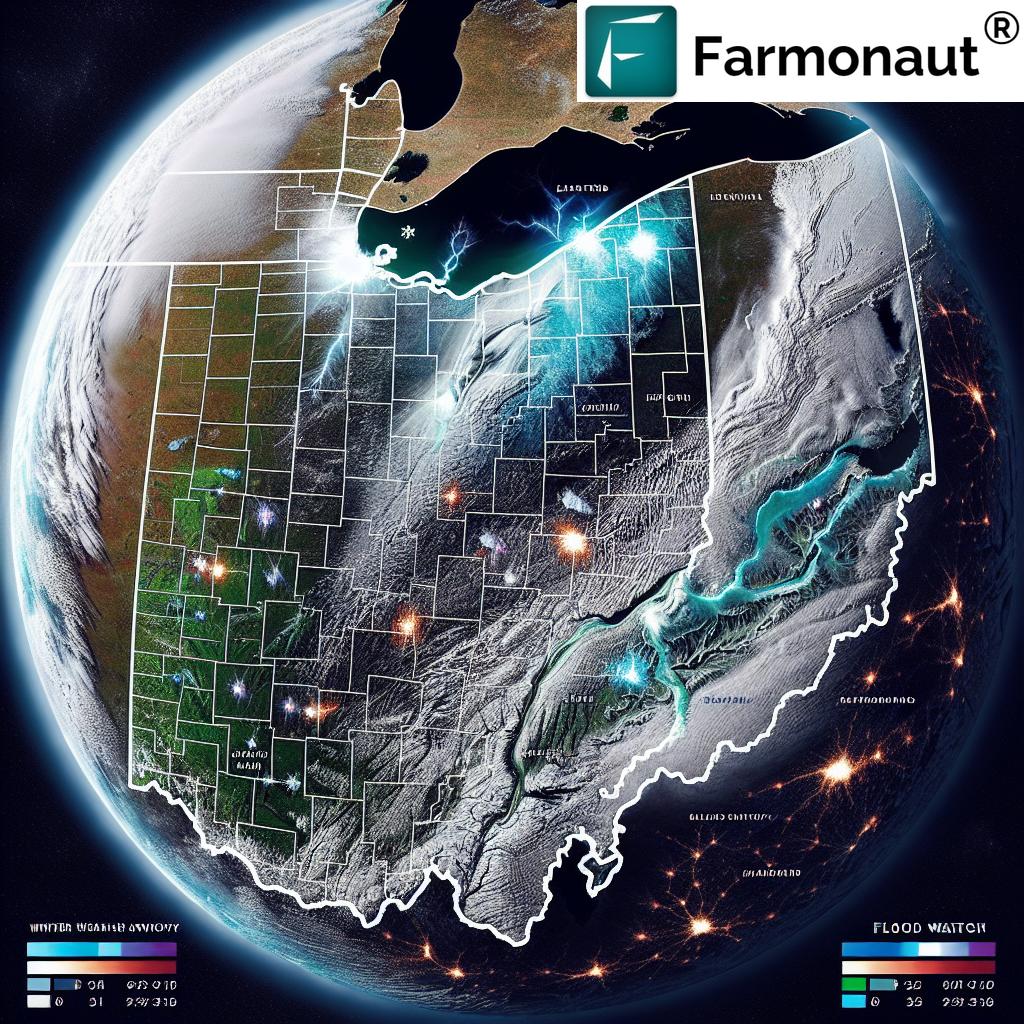Crop Insurance Charlotte NC: 2025 Payout Guide
Crop Insurance in Charlotte, NC: A Vital Safeguard for Farmers in 2025
Agriculture in Charlotte, North Carolina, remains a significant contributor to the regional economy in 2025, with diverse production ranges—from corn and soybeans to fruits and vegetables. Facing unpredictable weather conditions and economic risks, local farmers turn to crop insurance charlotte nc as an essential tool for risk management, sustainability, and financial stability.
“In 2025, over 85% of Charlotte, NC farmers are expected to enroll in crop insurance for climate resilience.”
Introduction
The agriculture sector around Charlotte, NC is critical to both local and regional food security and the economy. Yet, farmers face a host of risks—including unpredictable weather patterns, disease outbreaks, pest infestations, and volatile market fluctuations. In this context, crop insurance charlotte north carolina has become an essential tool for risk management and farm stability, enabling operations to withstand devastating events like hurricanes, floods, and drought.
As 2025 brings new climate and economic challenges, our comprehensive guide explores how crop insurance in Charlotte is evolving—with detailed explanations of coverage types, payout models, the importance of technology, and practical steps for farmers to ensure reliable payouts and sustained production.
Understanding Crop Insurance in Charlotte, North Carolina
Why Crop Insurance Matters for Charlotte, NC Farmers
Crop insurance charlotte nc is a federally backed program administered by the USDA’s Risk Management Agency (RMA). It is offered through private insurers and is designed to protect farmers against losses caused by natural disasters, unpredictable weather conditions, and other adverse events.
- Provides a financial buffer against yield or revenue losses
- Mitigates impact of adverse weather (hurricanes, hail, drought, floods)
- Enables access to capital and stability for continued production
- Supports regional economic stability
In Charlotte, our agricultural landscape is uniquely susceptible to occasional hurricanes, variable rainfall, and storms that can devastate crops. Insurance acts as a critical safeguard, ensuring stability and producing a climate-resilient foundation for Charlotte NC farming, both for small family farms and larger commercial enterprises.
How Does Crop Insurance Charlotte NC Work?
- Farmers select policy based on crop type, risk appetite, and premium affordability
- Premiums (partially subsidized by USDA) set according to risk assessment and local climate modeling
- If losses occur, the insurance payout is calculated based on the difference between guaranteed yield or revenue and actual outcome
- Timely claims processing ensures farmers can cover input costs and reinvest
With the complexity of modern risks, the integrated approach of multi-peril crop insurance (MPCI) and specialized offerings ensure comprehensive protection for agricultural operations in North Carolina.
The Importance of Crop Insurance Payouts: 2025 Realities and Trends
One of the most critical functions of crop insurance charlotte north carolina is the timely, adequate crop insurance payout. For farmers facing adverse growing conditions, payouts provide a financial lifeline—enabling continued operations without disruption.
- Payouts cover direct input costs: seeds, fertilizers, labor, equipment, land preparation
- Enable rapid recovery: Supporting replanting and restoring damaged infrastructure
- Protect farm incomes: Reducing impact of market and climate-related fluctuations
- Promote economic stability: Supporting rural communities reliant on agriculture
According to recent trends, in 2025, payouts are more efficient and responsive due to advancements in technology and streamlined insurance claims processes.
Impact on Crop Production and Community Sustainability
When damaging events (ex. hurricanes, hail, floods) strike in Charlotte, insured farmers are best positioned to bounce back, avoid severe economic loss, and protect the future of agriculture in the region. Payouts are not just compensation—they are the assurance that our farmlands will continue to yield, invest in better farming practices, and promote sustainable agriculture in Charlotte NC.
“Sustainable crop insurance payouts in Charlotte, NC reached $42 million in 2024, protecting local agriculture from extreme weather.”
Types of Crop Insurance Available in Charlotte NC
Crop insurance charlotte north carolina offers diverse policies tailored for local conditions:
-
Multi-Peril Crop Insurance (MPCI):
- Covers: Weather (hail, frost, drought, flood), disease, pests, fire
- Benefits: Comprehensive, suitable for diverse crop ranges
-
Crop-Hail Insurance:
- Specifically protects against hail damage
- Purchased as a standalone or supplementary policy
-
Revenue Protection (RP):
- Compensates for loss in income due to yield shortfalls or markets
- Ideal for producers exposed to price volatility
-
Whole-Farm Revenue Protection (WFRP):
- Covers revenue for all crops on a farm
- Suitable for diversified farms in the Charlotte region
Farmers in Charlotte NC usually opt for a mix of these policies, guided by their farm’s size, crop types, risk appetite, and recent weather trends. Understanding your choices in crop insurance charlotte north carolina is crucial for safeguarding future harvests in our changing climate.
Crop Insurance Coverage & Estimated 2025 Payouts in Charlotte, NC
Below is a comprehensive table comparing key features of crop insurance coverage for the Charlotte region, including premium estimates, coverage levels, 2025 payout ranges, and sustainability notes to help farmers make climate-smart choices.
| Crop Type | Coverage Level (%) | Estimated Annual Premium ($/acre) |
Estimated Payout Range in 2025 ($/acre) |
Environmental Impact Notes |
|---|---|---|---|---|
| Corn | 70%-85% | $24 – $52 | $110 – $300 | Encourages drought-tolerant hybrids; supports soil health & carbon farming |
| Soybeans | 65%-80% | $18 – $45 | $75 – $210 | Promotion of regenerative crop rotations for sustainability |
| Cotton | 65%-85% | $28 – $60 | $95 – $270 | Supports conservation tillage and precision water management |
| Fruits | 50%-75% | $37 – $80 | $150 – $610 | Stress on pollinator-friendly practices and reduced chemical use |
| Vegetables | 60%-80% | $31 – $70 | $120 – $470 | Supports crop diversity and integrated pest management (IPM) |
Key Takeaways:
- Higher coverage levels translate to higher payouts but also higher premiums
- Crops like fruits & vegetables incur larger premiums but offer substantial compensation due to their sensitivity
- Sustainability components—like carbon farming, regenerative rotations, and IPM—are now factored into risk modeling and payouts
Evolving Landscape of Crop Insurance in Charlotte, NC (2025 and Beyond)
In 2025, the crop insurance charlotte nc sector is being reshaped by several trends:
- Technological Integration: Satellite imagery, drones, IoT, and AI ensure precision assessments of damage and improved premium calculations.
- Climate Adaptation: Policies increasingly tailored to local risks—reflecting frequency/future patterns of extreme weather events in Charlotte NC
- Sustainability & Resilience Incentives: Farmers adopting carbon-smart or regenerative practices may access premium discounts or enhanced coverage
- Expansion of Education/Outreach: Local agricultural agencies invest in ensuring all farmers—from smallholders to newcomers—understand, access, and opt for optimal policies
Increased focus on quick, data-driven payouts makes crop insurance a vital safeguard amidst a future marked by uncertainty and volatility.
Technological Trends: Transforming Crop Insurance & Risk Management
Satellite Imagery & Data Modeling in Insurance Assessments
Satellite and drone-based monitoring is now at the forefront of risk assessment and claims processing in Charlotte NC. These tools:
- Deliver real-time crop status and damage visualization for timely claims
- Improve yield forecasting using multispectral and weather data integration
- Reduce premium disputes by aligning reported losses with satellite-verified conditions
- Enable insurers to accurately price policies and payout models based on localized climate trends
The adoption of such technology significantly reduces administrative burdens for farmers and insurance providers, increasing the fairness and speed of the crop insurance payout process.
Blockchain and Traceability for Reliable Payouts
Blockchain-based verification is now being explored by leading insurance providers and technology platforms. By ensuring the traceability of crop origins, field history, and risk modeling data, blockchain provides secure, transparent records for both farmers and insurers. This transition:
- Reduces fraud and disputes in crop insurance claims
- Guarantees the authenticity of payouts and auditing
- Builds farmer-insurer trust through transparent processes
How Farmonaut Supports Sustainable Crop Insurance and Agricultural Resilience in Charlotte, NC
We at Farmonaut offer comprehensive satellite-based solutions designed for the future of farming and crop insurance. Our platform seamlessly supplies real-time monitoring, AI-driven advisory services, and secure blockchain traceability to all parties involved in agriculture and risk management.
- Satellite Crop Monitoring: We utilize multi-spectral imaging to deliver precise field health data (NDVI), drought alerts, and yield estimates. This empowers both individual farmers and insurance providers in Charlotte, NC to make informed, proactive decisions about coverage and claims.
-
JEEVN AI Advisory System: Our proprietary AI analyzes current satellite readings and weather forecasts to provide tailored risk mitigation advice, helping farmers adopt sustainable practices and reduce insurance-related losses.
Explore Farmonaut’s carbon footprinting solutions for sustainable agriculture and insurance incentives.
- Blockchain-based Traceability: We deliver traceable, immutable histories of crop and field data—reinforcing evidence for insurance claims and unlocking faster, more reliable payouts in the case of devastating events.
-
Satellite-Driven Resource & Fleet Management: We help farms and insurance customers optimize machinery, labor, and crop input logistics—reducing costs, increasing operational efficiency, and ensuring risk management is both sustainable and cost-effective.
Discover how Farmonaut’s fleet management tools streamline agricultural scheduling for faster response in extreme weather.
- API Accessibility: Enhance your agri-tech stack with our robust API and developer tools. Documentation: API Developer Docs.
Choosing the Right Crop Insurance Policy: A Charlotte Farmer’s Step-by-Step Guide
Securing the optimal policy requires understanding your risks, climate profile, and desired protection. For Charlotte, NC:
- Assess Your Exposure: List the climate and economic risks impacting your operation—storms, hail, drought, pest pressure, market volatility.
- Determine Coverage Needs: Match your crop types and operation scale to the most fitting policy (MPCI, hail only, revenue-based, or whole-farm).
- Compare Premiums & Payouts: Use estimated payout ranges (see our table above) for each crop to model annual cashflow in relation to past losses.
- Consult Trusted Agents: Local insurers and USDA Risk Management Agency field offices offer expert advice for Charlotte farmers.
- Update Yearly: Review changing weather trends, technological offers, and policy terms every year (especially as Charlotte’s climate continues evolving).
Best Practices for Crop Insurance Claims & Payouts in 2025
- Document Early & Thoroughly: Log all planting/harvest operations, climate impacts, and observable losses—using digital tools & satellite-based evidence if possible.
- File Promptly: Most insurers require claims to be filed immediately after discovering damage or loss events.
- Utilize Digital Platforms: Leverage web/mobile platforms (like Farmonaut App) for photo evidence, NDVI imagery, field history, and claim creation/submission.
- Communicate Regularly: Engage with insurance adjustors and local USDA offices to resolve disputes and accelerate the payout process.
- Integrate with Tech Providers: Digital traceability and remote sensing streamline claims, minimize disputes, and enable precise compensations.
Useful Resources and App Links for Farmers and Insurers
-
Farmonaut Web & Mobile App – Track your field health, risks, and claims 24/7.
Try the Web App
|
Download for Android
|
Download for iOS - API Access – Integrate real-time satellite and weather data into your insurance assessment stack. Access API | Read Developer Docs
-
Sustainable Agriculture Products – Maximize insurance eligibility and climate incentives by tracking your carbon footprint.
Learn About Carbon Footprinting Product - Traceability & Blockchain Tools – Secure, end-to-end verification for insurance claims and product origin. Discover Product Traceability
-
Insurance & Loan Verification Tools – Ensure compliance, eligibility, and quick claim assessment.
Explore Crop Loan and Insurance -
Agro-Admin App for Large Operations – For big farms or farm managers tracking multiple policies/fields.
Try the Agro-Admin App -
Crop Plantation & Forest Advisory – Satellite data for forest farming and tree-crop planning.
Use Forest & Plantation Advisory
Frequently Asked Questions: Crop Insurance Charlotte NC (2025)
What is the main benefit of crop insurance in Charlotte, NC?
Crop insurance charlotte nc provides crucial financial protection against weather, pest, and market-related crop losses—ensuring the continuity of farm incomes and supporting the stability of the local agricultural economy.
Are crop insurance premiums subsidized in North Carolina?
Yes. The USDA Risk Management Agency subsidizes premiums for eligible policies, helping make coverage affordable for a wide range of farmers—from small-family operations to larger enterprises.
How are payouts calculated?
Payouts are based on the difference between your guaranteed yield or revenue (coverage level) and your actual achieved outcome during a season with qualifying loss events.
What types of losses does multi-peril insurance cover?
Multi-peril policies typically cover yields lost due to drought, excessive moisture, hail, wind, hurricanes, flood, pests, and disease, among other events.
How has technology improved crop insurance for Charlotte farmers?
Satellite monitoring, AI analysis, and digital traceability make claims more accurate and speed up payouts, allowing Charlotte’s farmers to recover from damage and extreme weather faster.
How can I access field and crop data for claims?
You can use digital platforms—including Farmonaut’s app and website—to monitor fields, log losses, and generate supporting documentation for your insurance policies and claims.
Conclusion: Future of Crop Insurance Charlotte NC—2025 & Beyond
As climate change and economic volatility reshape North Carolina agriculture, crop insurance charlotte nc remains the cornerstone of sustainable farm risk management. It provides financial stability and ensures food production—even through unpredictable weather, pest, and market disruptions.
Looking forward to 2025 and beyond, the expansion of technology-driven monitoring, precise modeling, and transparent payout systems will only enhance the value of crop insurance in Charlotte, North Carolina. Insurance, in close alignment with sustainable practices and digital innovation, empowers farmers to thrive in times of uncertainty—and to keep Charlotte’s fields productive for generations to come.
Stay prepared. Embrace the future of sustainable agriculture, resilience, and insurance excellence with the right coverage and modern technology.















